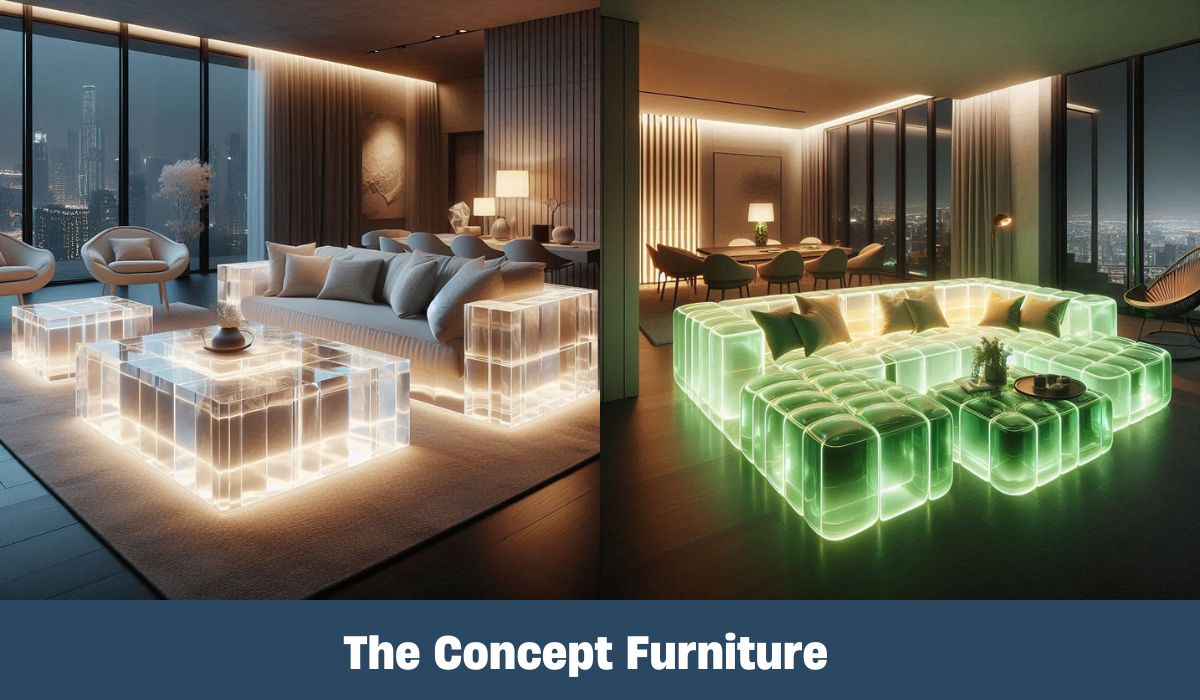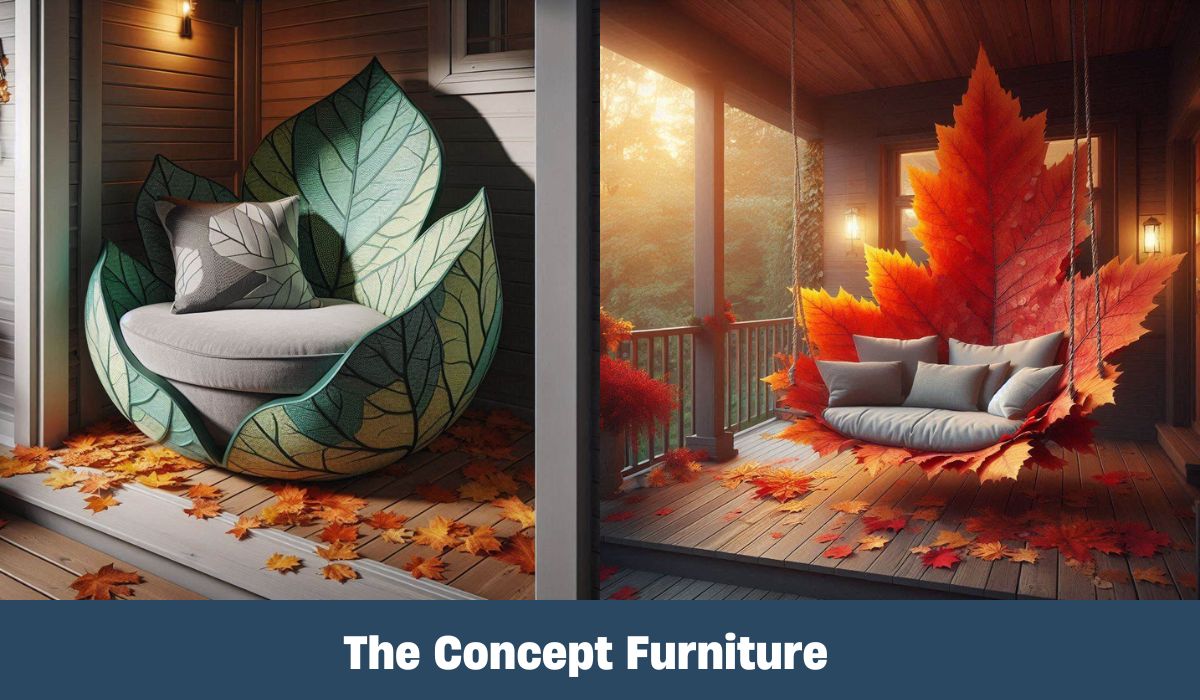Wood slab staircases blend rustic charm with modern elegance. Unlike traditional staircases, these unique designs showcase the natural beauty of wood. They create a warm and inviting atmosphere in any home. Each staircase tells its own story through distinct grain patterns and textures.
Choosing a wood slab staircase means opting for durability and style. These structures stand out as functional art pieces. They are not just about getting from one floor to another; they elevate the entire space. With various wood types and finishes available, customization is easy. Transform your home with a stunning centerpiece that reflects your personality. Discover how wood slab staircases can redefine your living area today.
Discover the Beauty of Wood Slab Staircases
Natural Grain
Wood slab staircases exhibit natural grain and unique patterns. Each piece of wood tells its own story. This adds character to any staircase. The grains can be straight, wavy, or even curly.
Different wood species enhance the visual appeal. For example, oak has a prominent grain pattern. Maple offers a lighter hue with subtle grains. Walnut provides a rich, dark color that stands out. These variations allow for stunning staircase designs.
Warmth and Inviting Feel
Wood brings warmth to interior spaces. It creates an inviting atmosphere in homes. A wood staircase can make a grand entrance feel cozy.
The texture of wood feels good to touch. It contrasts with cold materials like metal or glass. People often feel more relaxed around natural elements. Wood slab staircases embody this comfort.
Aesthetic Impact
Various wood species impact the aesthetic of staircases. Hardwoods are popular for their durability and beauty. Common choices include cherry, birch, and hickory. Each species has distinct colors and grain patterns.
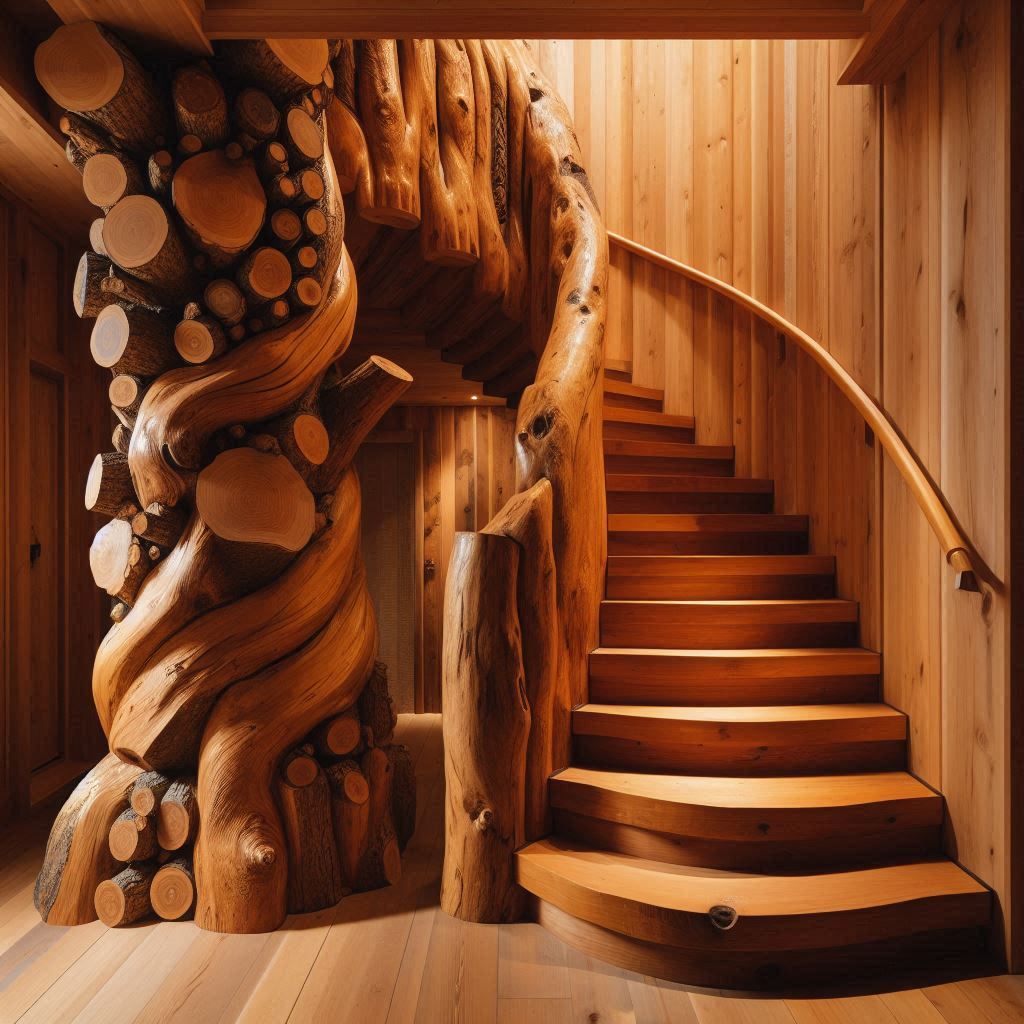
Cherry wood ages beautifully, deepening in color over time. Birch is light and bright, perfect for modern designs. Hickory features dramatic contrasts between light and dark areas.
These choices allow homeowners to customize their stairs according to style preferences.
Unique Design Ideas
Designing a wood slab staircase opens up many possibilities. Curved staircases create a sense of flow in a space. They can soften sharp angles in a room.
Straight staircases offer simplicity and elegance. They work well in traditional and contemporary homes alike.
A unique staircase design idea might involve using reclaimed Wood Slab Staircases. This not only adds character but also promotes sustainability.
Various Styles
Wood slab staircases fit into various styles. They can enhance classic staircases with intricate details. Modern staircases benefit from clean lines and minimalism.
Beautiful staircase designs often incorporate open risers or floating steps. This gives an airy feel while showcasing the wood’s beauty.
Homeowners can choose from elegant traditional designs to sleek modern looks.
By incorporating these elements, wood slab staircases become focal points in residential spaces.
Explore Design Versatility and Trends
Floating Treads
Current trends highlight the popularity of floating treads in wood slab staircases. This design creates a modern and airy feel. It allows light to flow beneath each step, enhancing the overall aesthetic. Floating treads often use thick wood slabs for a bold look. They also provide a unique visual interest compared to traditional stairs.
Many homeowners prefer this style because it maximizes space. The open design makes small areas appear larger. Floating treads can be paired with glass railings for a sleek finish. This combination adds elegance while maintaining safety.
Rustic and Contemporary Styles
Wood Slab Staircases offer flexibility in design, fitting both rustic and contemporary styles. In rustic homes, wood slabs bring warmth and charm. They often feature natural edges and rough textures. This enhances the organic feel of the space.
For contemporary designs, smooth finishes and clean lines are key. Wood slabs can be sanded to create a polished look. Dark stains or lighter hues can match various color schemes. This adaptability makes wood slabs ideal for diverse home decors.
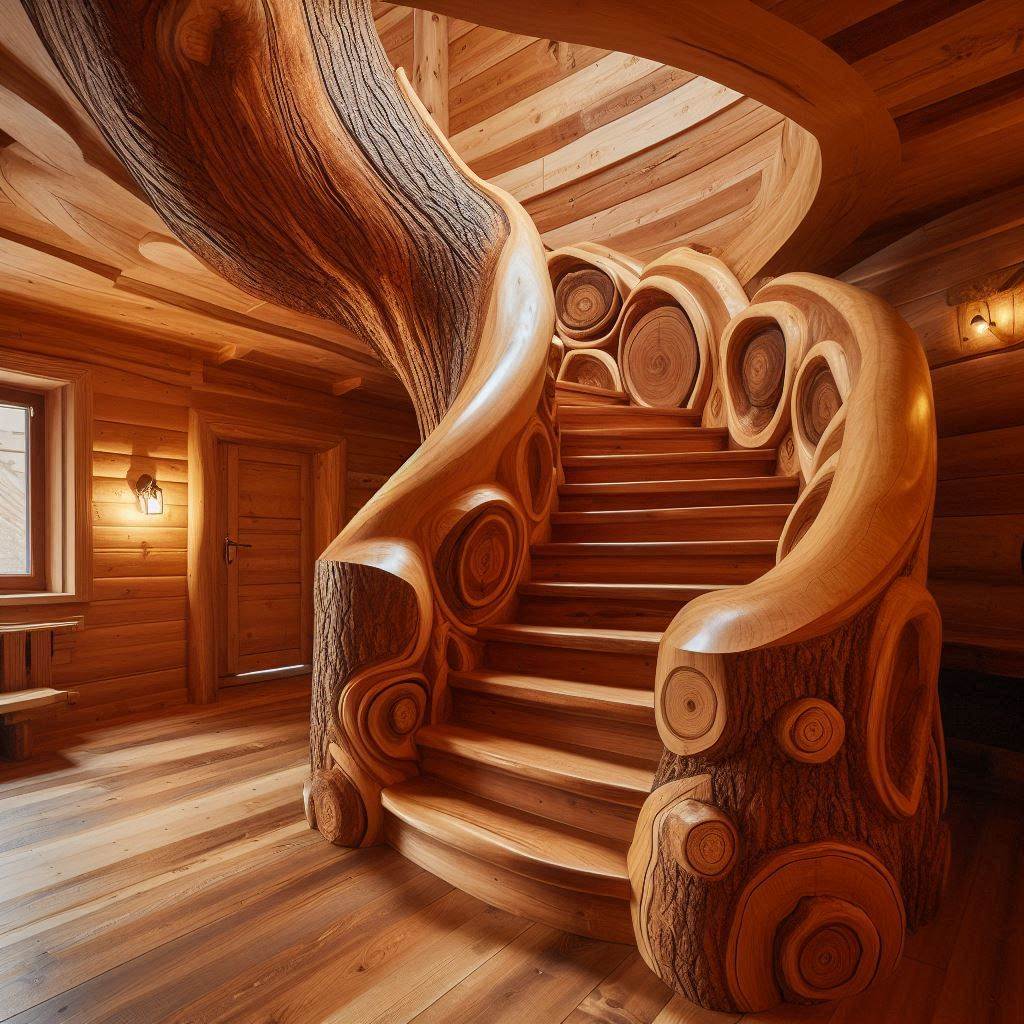
Innovative Ideas
Innovative ideas show how wood slabs can be used in unexpected ways. For instance, some designs incorporate wood slabs as side supports for stairs. This technique adds stability while showcasing the beauty of the wood.
Another trend features integrated lighting within the treads. LED lights can illuminate each step, creating a stunning visual effect at night. This not only enhances safety but also adds a modern touch.
Using reclaimed wood slabs is another creative approach. This choice promotes sustainability while providing character to staircases. Each piece tells its own story, making every staircase unique.
Unique Combinations
Combining materials can also elevate wood slab staircase designs. Pairing metal with wood creates an industrial vibe. Metal railings complement the warmth of the wood while adding strength.
Mixing different types of wood can create striking contrasts. For example, blending dark walnut with lighter maple adds depth and interest. This technique allows homeowners to express their personal style.
Practical Considerations
Practical considerations play a role in choosing wood slab staircases. Durability is crucial since stairs endure heavy foot traffic. Selecting high-quality wood ensures longevity and reduces maintenance needs.
Safety should not be overlooked either. Non-slip finishes can enhance grip on treads, reducing accidents. Consulting with professionals helps ensure that all aspects of design and safety are addressed.
Integrate with Various Architectural Styles
Traditional Architecture
Wood slab staircases fit well with traditional architecture. Their natural look adds warmth to classic designs. These staircases often feature rich wood grains and textures. This enhances the overall aesthetic of homes built in colonial or Victorian styles.
In many traditional homes, wood has been a primary material for centuries. The use of wood slabs for stairs maintains this historical connection. It provides a seamless flow from one level to another. The sturdy construction of wood slabs offers both safety and elegance. Homeowners appreciate how these staircases can be stained or painted to match existing decor.
Modern Homes
Minimalist wood slab designs resonate strongly in modern homes. These staircases emphasize simplicity and functionality. Clean lines and open spaces define modern architecture. Wood slabs align perfectly with this vision.
The appeal lies in their unobtrusive nature. They do not overwhelm the space but rather enhance it. Many modern designs favor open-concept layouts. Wood slab staircases contribute to this openness, allowing light to flow freely between levels.
Moreover, homeowners often choose lighter woods like maple or birch for a contemporary feel. These materials brighten spaces and create an airy atmosphere. The combination of minimalism and natural elements creates a harmonious balance in modern interiors.
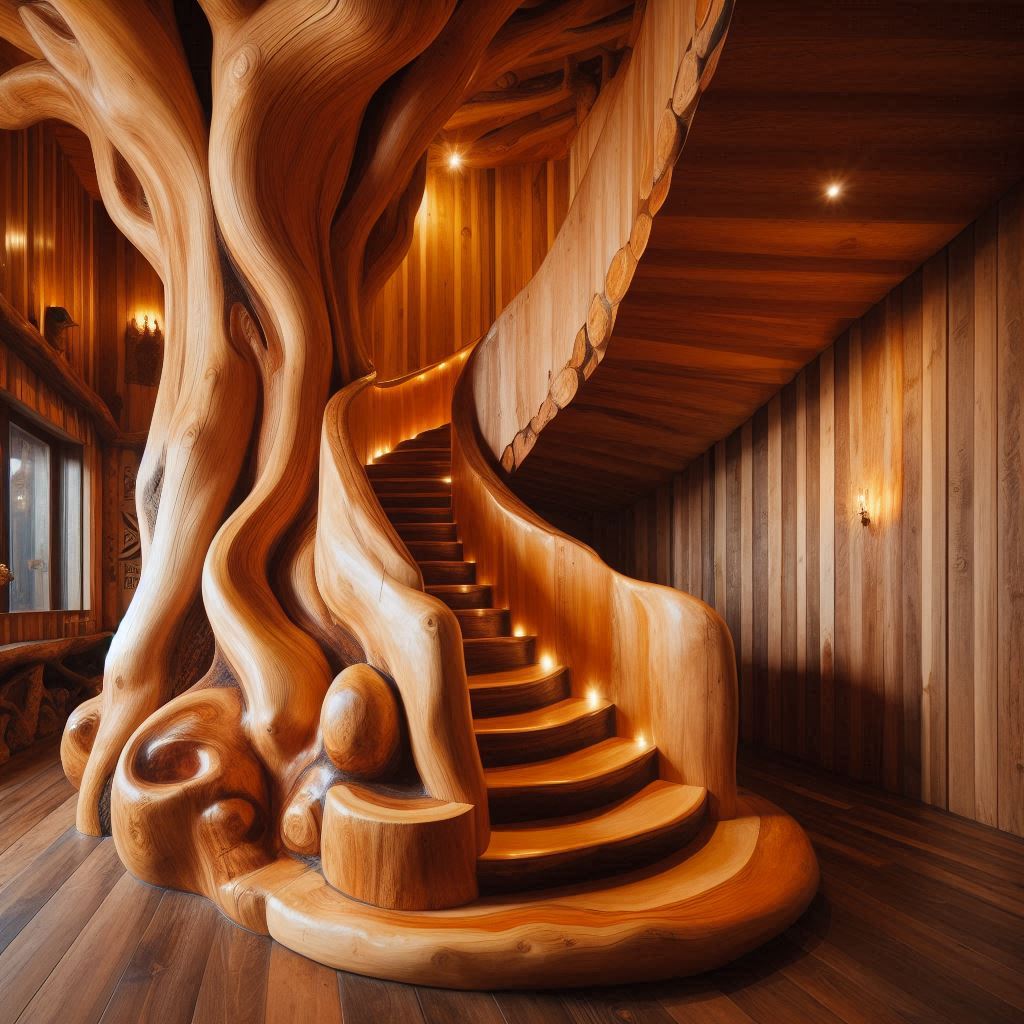
Industrial Aesthetics
Wood slabs also work well in industrial aesthetics. This style often features raw materials like metal and concrete. The warmth of wood contrasts beautifully with these harder elements.
Many industrial spaces embrace reclaimed wood slabs for stairs. This choice adds character and history to the design. Reclaimed wood carries stories from its past, making each staircase unique.
The rough texture of industrial-style homes pairs well with the smooth finish of wood slabs. This combination creates visual interest. It draws attention without being overly flashy.
Farmhouse Style
In farmhouse aesthetics, wood slab staircases shine brightly. They bring a rustic charm that fits perfectly within this design style. Farmhouse designs often emphasize comfort and simplicity.
Using wide, thick wood slabs creates a sturdy feeling underfoot. This reflects the practical nature of farmhouse living. Homeowners often opt for darker stains that highlight the natural grain of the wood.
The organic feel of these staircases complements other farmhouse elements like shiplap walls or barn doors. Together, they create a cozy atmosphere that invites people in.
Combine with Other Materials for Modern Appeal
Wood and Metal
Pairing wood slabs with metal creates a striking contrast. The warmth of wood beautifully complements the sleekness of metal. This combination works well in modern designs. For example, using steel railings alongside wooden steps adds an industrial touch.
Metal can also be used in support structures. Metal brackets can hold wood slabs securely. This adds both strength and style to the staircase. Designers often choose black or brushed nickel finishes for a contemporary look.
Glass Elements
Incorporating glass elements enhances visibility and lightness. Glass panels can serve as railings, allowing natural light to flow through. This makes spaces feel larger and more open.
Clear or frosted glass offers safety without blocking views. It allows one to appreciate the beauty of the wood slabs from different angles. Many homeowners prefer this option for its modern aesthetic.

Glass can also be integrated into the staircase design itself. For instance, floating glass steps paired with wood create a stunning visual effect. This combination emphasizes elegance while maintaining functionality.
Stone and Concrete
Integrating stone or concrete provides added durability to wood slab staircases. These materials are known for their strength and longevity. Stone steps can withstand heavy foot traffic without showing wear.
Concrete is another excellent choice for stability. It can be poured into various shapes and sizes, allowing creative freedom in design. A concrete base under wood slabs ensures that they remain secure over time.
Combining these materials also enhances the staircase’s overall aesthetic. A mix of textures creates visual interest. For example, pairing rough stone with smooth wood adds depth to the design.
Benefits of Material Combinations
The benefits of combining materials are clear. Each material contributes unique characteristics that enhance the staircase’s appeal.
- Durability: Using stone or concrete increases lifespan.
- Aesthetic Variety: Mixing textures adds interest.
- Modern Look: Metal and glass provide a contemporary feel.
Homeowners appreciate these combinations for their versatility. They allow for personal expression while ensuring safety and functionality.
Practical Tips for Installation and Maintenance
Selecting Wood Type
Choosing the right wood type is crucial for a staircase. Hardwoods like oak, maple, and walnut are popular choices. They offer durability and strength. Softwoods, such as pine and cedar, are less durable but can be more affordable.
Consider the environment where the staircase will be installed. Humidity can affect wood. For humid areas, opt for woods that resist moisture. Teak and mahogany are good options due to their natural oils.
Another factor is the color and grain of the wood. Different species have unique appearances. Select a wood that matches your home’s style. This choice impacts both aesthetics and functionality.
Installation Steps
Proper installation ensures safety and stability. Follow these essential steps:
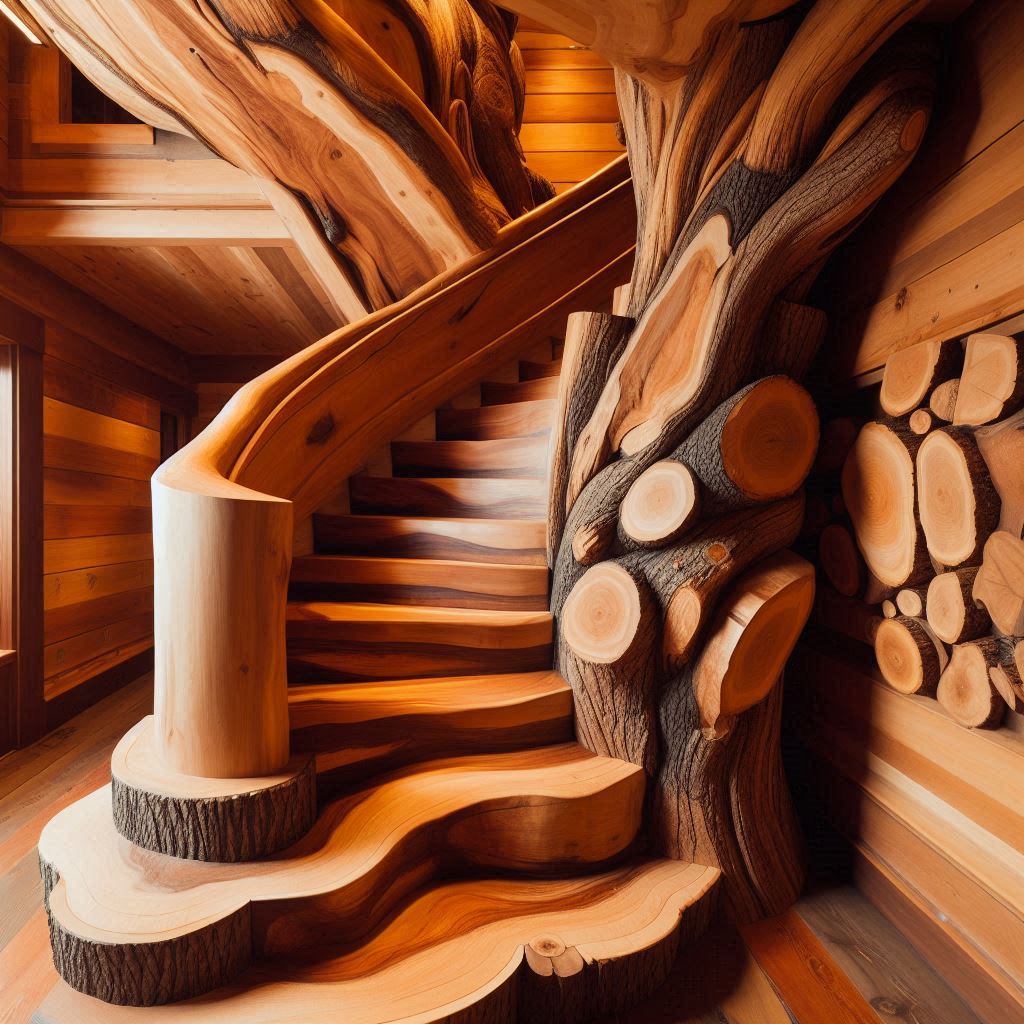
- Measure the Space: Accurate measurements prevent mistakes.
- Prepare the Framework: Install a solid frame to support the slabs.
- Cut the Slabs: Use precise cuts to fit the design.
- Secure the Slabs: Fasten them using screws or brackets for stability.
- Check for Levelness: Ensure each slab is level to avoid accidents.
Using quality materials during installation is vital. Avoid cheap screws or adhesives as they may fail over time.
Always wear safety gear when working with wood. Eye protection and gloves can prevent injuries during cutting and installation.
Maintenance Tips
Maintaining wood slab staircases preserves their beauty and longevity. Regular cleaning is essential. Use a damp cloth to wipe away dust and dirt. Avoid harsh chemicals that can damage the finish.
Apply a protective sealant every few years. This helps guard against scratches and moisture damage. Refinish the surface if it shows signs of wear.
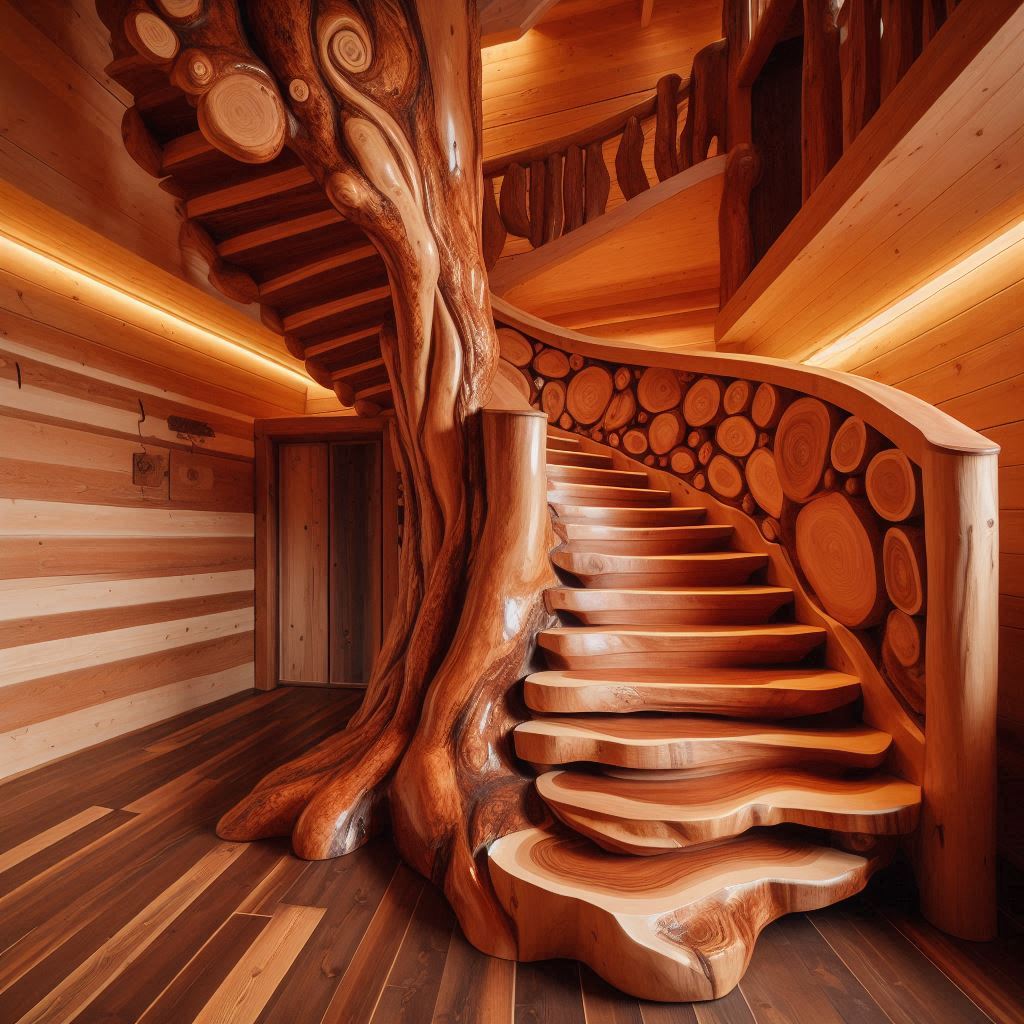
Inspect the stairs regularly for loose slabs or screws. Tighten any loose parts immediately to ensure safety.
Consider using rugs or runners on high-traffic areas of the staircase. This adds extra protection while enhancing design.
Understand Cost Implications
Cost Factors
Several factors influence the cost of wood slab staircases. The type of wood used plays a significant role. Hardwoods like oak and maple are often more expensive than softwoods like pine.
The size and design also impact the price. Larger, custom designs require more material and labor, increasing costs. Installation complexity is another factor. If a staircase requires unique angles or railings, it will cost more to install.
Finishing touches add to the expenses as well. Staining or sealing the wood protects it but can also raise the budget.
Wood Slabs vs. Traditional Materials
Comparing wood slabs to traditional staircase materials reveals some key differences. Traditional materials often include metal, concrete, or laminate. These options can be cheaper initially but may not offer the same aesthetic appeal as wood.
Wood slabs provide a natural look that many homeowners prefer. They can enhance the overall beauty of a home. However, traditional stairs may have lower upfront costs due to cheaper materials.
While wood slab staircases might seem pricier at first, they often prove to be a better investment over time.
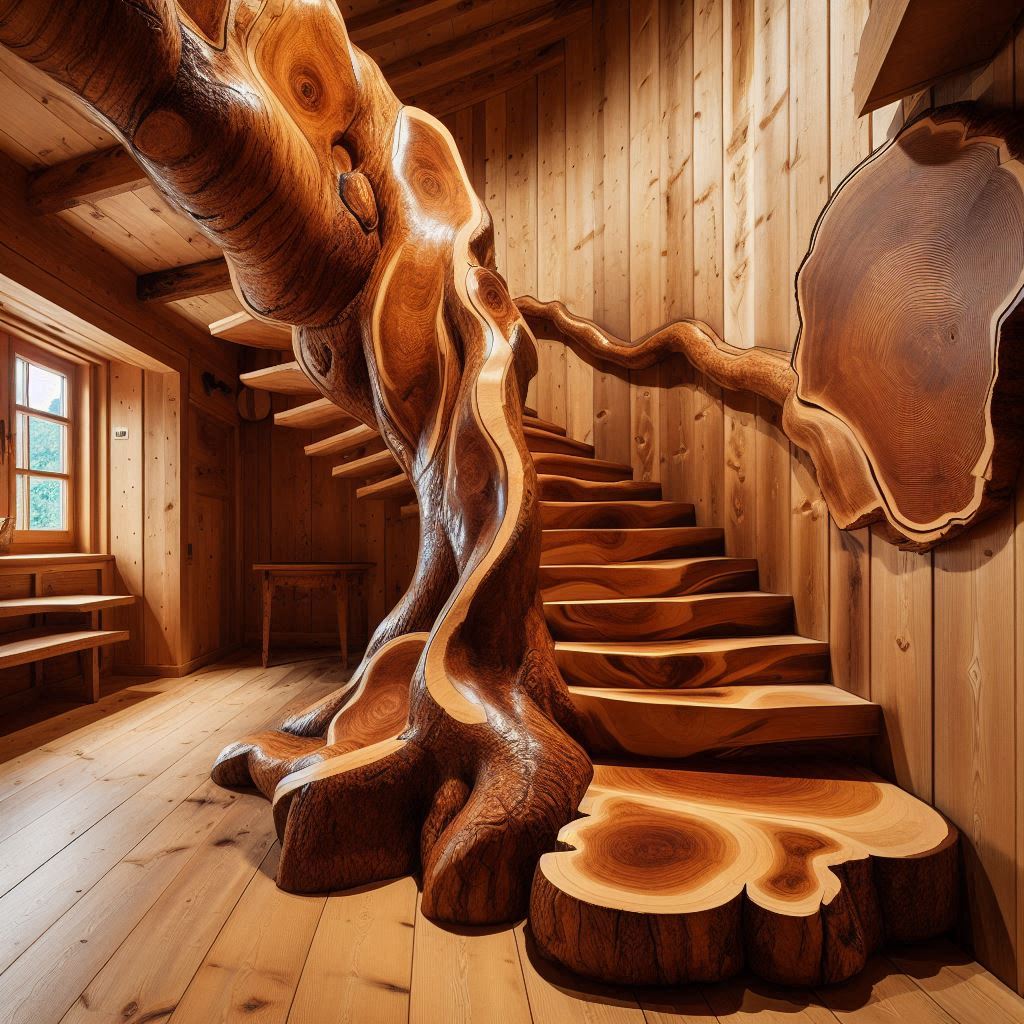
Long-Term Savings
Investing in wood slabs can lead to potential long-term savings. Wood is typically more durable than other materials. A well-maintained wood staircase can last for decades without needing replacement.
Low maintenance is another advantage of wood slabs. Regular cleaning and occasional refinishing keep them looking new. This reduces repair costs compared to other materials that may chip or rust.
Consider the cost-effectiveness of each option carefully. While wood slabs require a higher initial investment, their longevity and low upkeep can save money over time.
Summary
Understanding the cost implications of wood slab staircases helps in making informed decisions. Factors like material choice, size, and design all affect pricing. Comparing wood slabs with traditional materials shows that while initial costs may be higher, the long-term benefits can outweigh those costs.
Investing in quality wood can lead to savings through durability and low maintenance needs. Homeowners should weigh these factors when considering their options for staircases.
Enhance with Modern Lighting Solutions
Strategic Placements
Placing lights correctly can highlight the beauty of wood slab staircases. Install lights on the wall next to the stairs. This creates a warm glow that draws attention to the wood’s unique grain and texture.
Consider using recessed lighting in the ceiling. Position them directly above each step for even illumination. This technique reduces shadows and enhances safety. Another option is to use LED strip lights under the treads. These lights create a floating effect, making the staircase appear more dynamic.
LED Impact
LED lighting significantly improves ambiance. It offers bright, clear light without consuming much energy. This feature makes it a cost-effective choice for homeowners.
Using LED lights also enhances staircase safety. Bright lighting helps prevent accidents by illuminating each step clearly. In 2020, the National Safety Council reported that falls are among the leading causes of injuries at home. Properly lit staircases can reduce this risk.
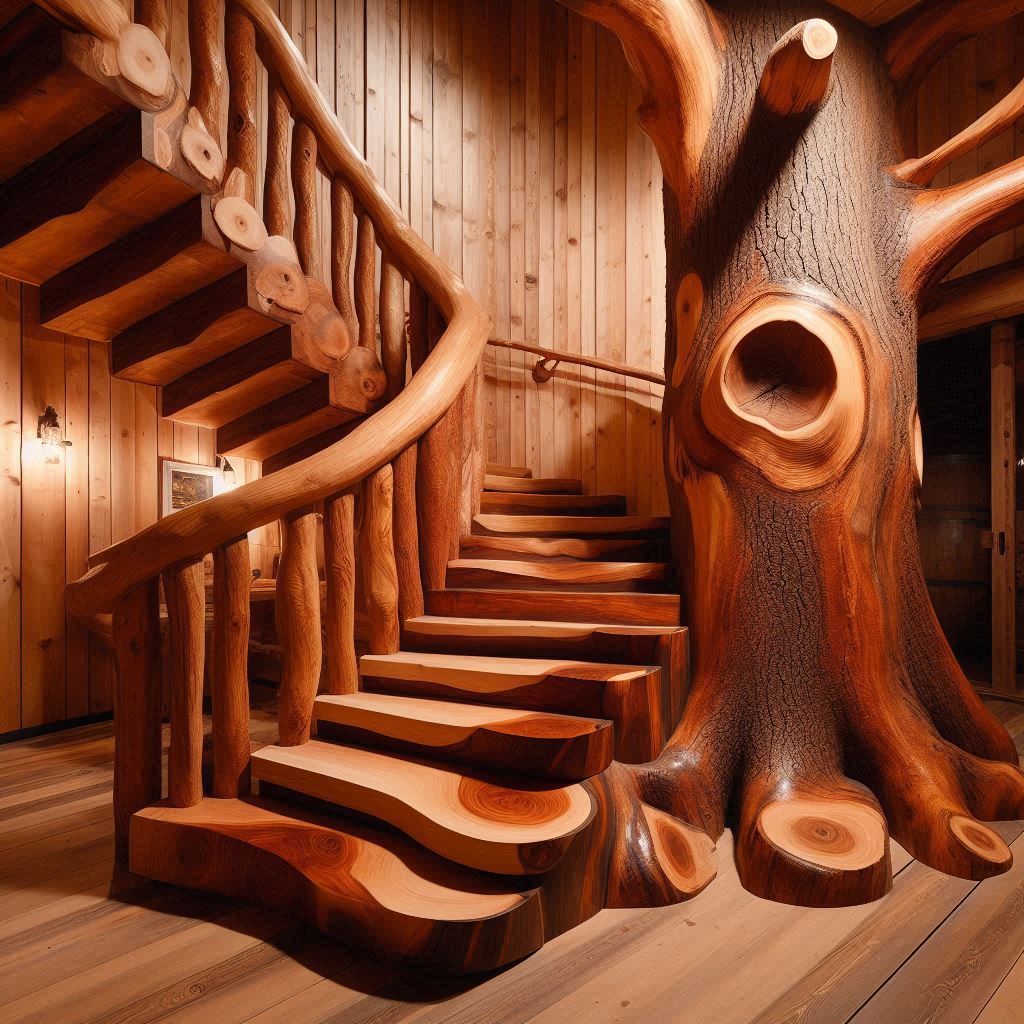
Accent Lights
Accent lights add visual interest along your staircase. Use small spotlights or wall-mounted fixtures to draw attention to specific features of the wood slabs. For example, you can highlight unique knots or patterns in the wood.
Consider installing pendant lights above landings or at the top of the staircase. These fixtures can serve as focal points and enhance overall design. They also provide additional light where needed.
Another idea is to use color-changing LED bulbs in your accent lights. This allows you to adjust the mood based on occasions or seasons. You can set a warmer tone for cozy gatherings or cooler tones for modern events.
Benefits of Lighting Solutions
- Increased Safety: Proper lighting reduces accidents.
- Enhanced Aesthetics: Highlighting features improves visual appeal.
- Energy Efficiency: LED options reduce electricity costs.
- Versatility: Adjustable lighting suits different moods.
Showcase Craftsmanship with Handrails
Importance of Handrails
Handrails play a crucial role in staircase design. They provide safety and support while adding to the overall aesthetic. A well-designed handrail can transform an ordinary staircase into a stunning focal point. The right handrail enhances the beauty of wood slab staircases, making them more inviting.
Materials for Handrails
Various materials work well for handrails alongside wood slabs. Metal is a popular choice. It offers durability and a modern look. Steel or wrought iron can add an industrial touch.
Glass is another option. It provides a sleek, contemporary feel while allowing light to flow through. This complements the natural beauty of wood slabs.
Wood handrails are traditional but can be customized to match the wood slab. Using the same type of wood creates a cohesive design. Different finishes can also enhance the appearance.
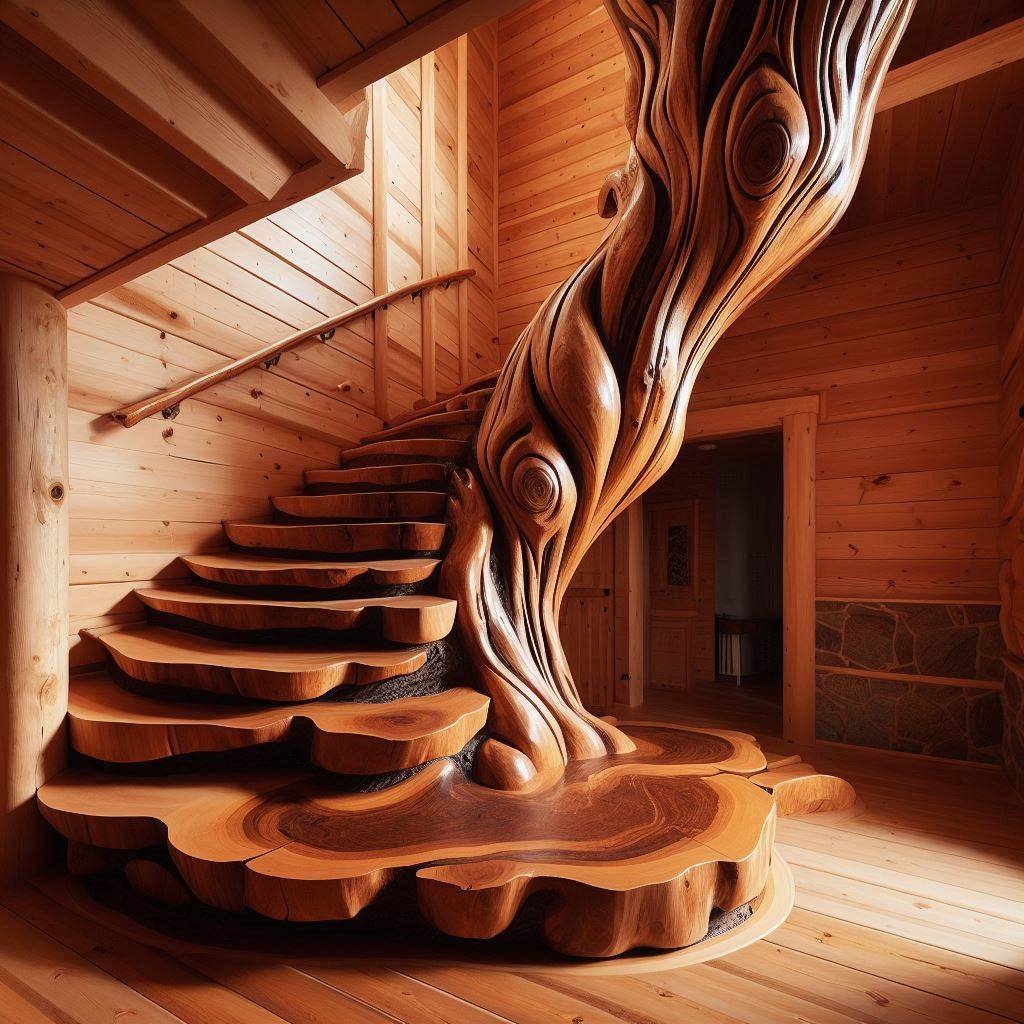
Styles of Handrails
Different styles can elevate the look of your staircase. Straight handrails are simple and functional. They work well in minimalist designs.
Curved handrails add elegance and sophistication. They create a smooth transition along the staircase. For a rustic feel, consider reclaimed wood handrails. They bring character and warmth.
Cable railings are another trendy option. They provide a modern aesthetic while ensuring safety without obstructing views.
Custom Craftsmanship
Custom craftsmanship allows homeowners to personalize their staircases. Working with skilled artisans can lead to unique designs tailored to individual tastes. Custom handrails can reflect personal style and enhance the home’s decor.
Designers can incorporate specific details, like carvings or unique shapes, that resonate with homeowners’ preferences.
Integration with Lighting
Combining handrail design with lighting creates a harmonious look. Lighting can highlight the craftsmanship of both the handrail and the wood slab stairs. Well-placed lights draw attention to these features, enhancing their beauty even further.
Create a Stunning Centerpiece in Your Home
Focal Points
Homeowners should view wood slab staircases as more than just a means to move between floors. These staircases can serve as stunning focal points in any home. The natural beauty of wood adds warmth and character to the living space.
Staircases often occupy significant visual space. A well-designed wood slab staircase can draw the eye and elevate the overall aesthetic of a home. It becomes a conversation starter for guests. Many people appreciate the unique grain patterns and textures found in each slab.
Connecting Levels
Staircases play an important role in connecting different levels of a home. They create flow between spaces, allowing movement from one area to another. This connection fosters a sense of unity within the design.
Wood slab staircases enhance this connection through their solid construction and organic appeal. They provide stability while being visually striking. Homeowners can choose from various styles, such as open risers or floating designs, to suit their preferences.
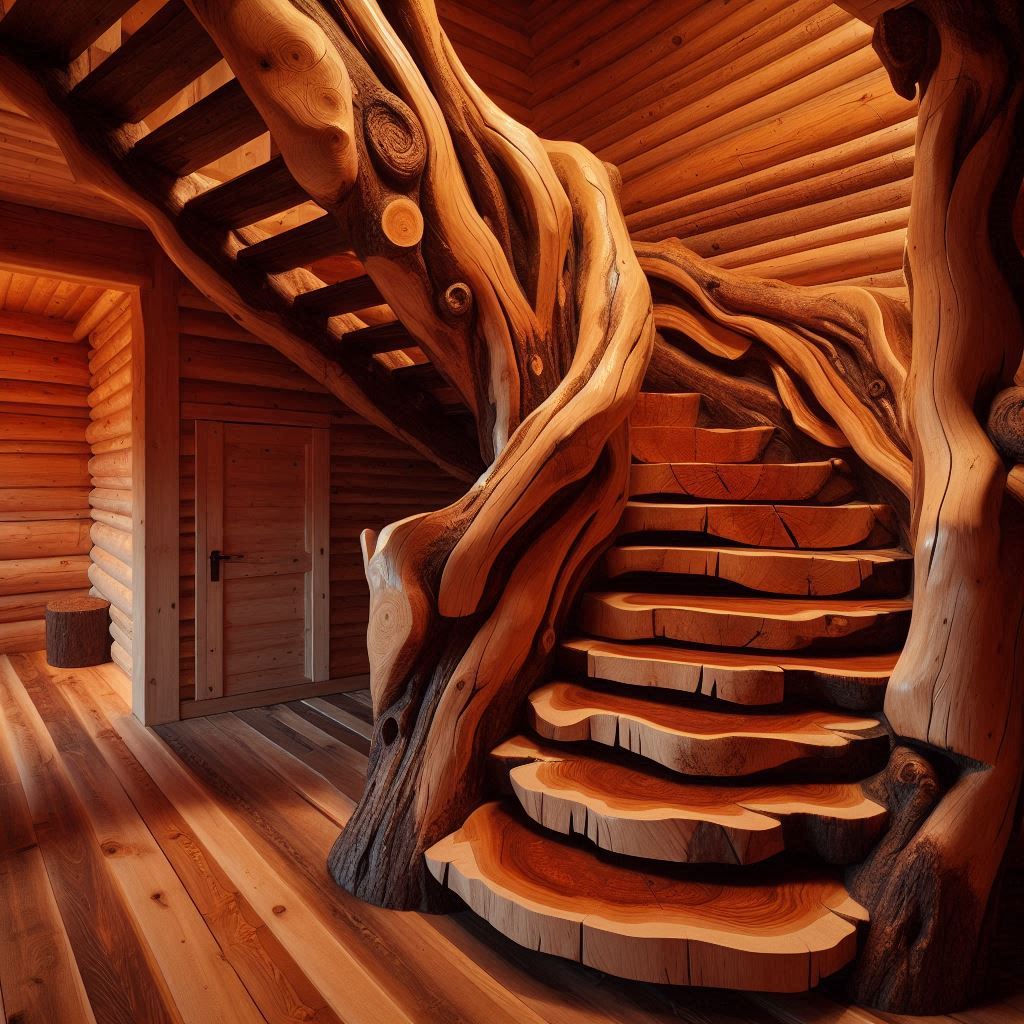
Decorative Elements
Incorporating decorative elements around the staircase can increase its impact. Adding artwork or plants nearby creates visual interest. Wall sconces or pendant lights can illuminate the staircase beautifully.
Consider using complementary colors and materials to enhance the overall look. For instance, metal railings paired with wood slabs create a modern contrast. This mix of textures enriches the design while maintaining a cohesive appearance.
For added charm, homeowners might consider:
- Artwork: Displaying paintings or photographs on adjacent walls.
- Rugs: Placing a runner along the staircase for comfort and style.
- Lighting: Using unique fixtures that highlight the staircase’s features.
These elements not only beautify the space but also contribute to its functionality.
Practical Considerations
When designing a wood slab staircase, practical considerations matter as well. Ensure that the stairs meet safety regulations and building codes. Proper installation is crucial for both aesthetics and safety.
Choosing durable finishes protects the wood from wear and tear. Regular maintenance will keep the staircase looking fresh over time. Simple cleaning routines can prevent build-up of dust and grime.
Final Remarks
Wood slab staircases are more than just functional; they are a statement piece. They enhance your space with natural beauty and craftsmanship. Whether you prefer modern or rustic styles, these staircases fit right in. You can mix materials to create a unique look that reflects your personality.
Now is the time to elevate your home with a stunning wood slab staircase. Consider your design options and maintenance needs. Don’t hesitate to reach out to professionals for installation tips. Your dream staircase awaits, so start planning today!


